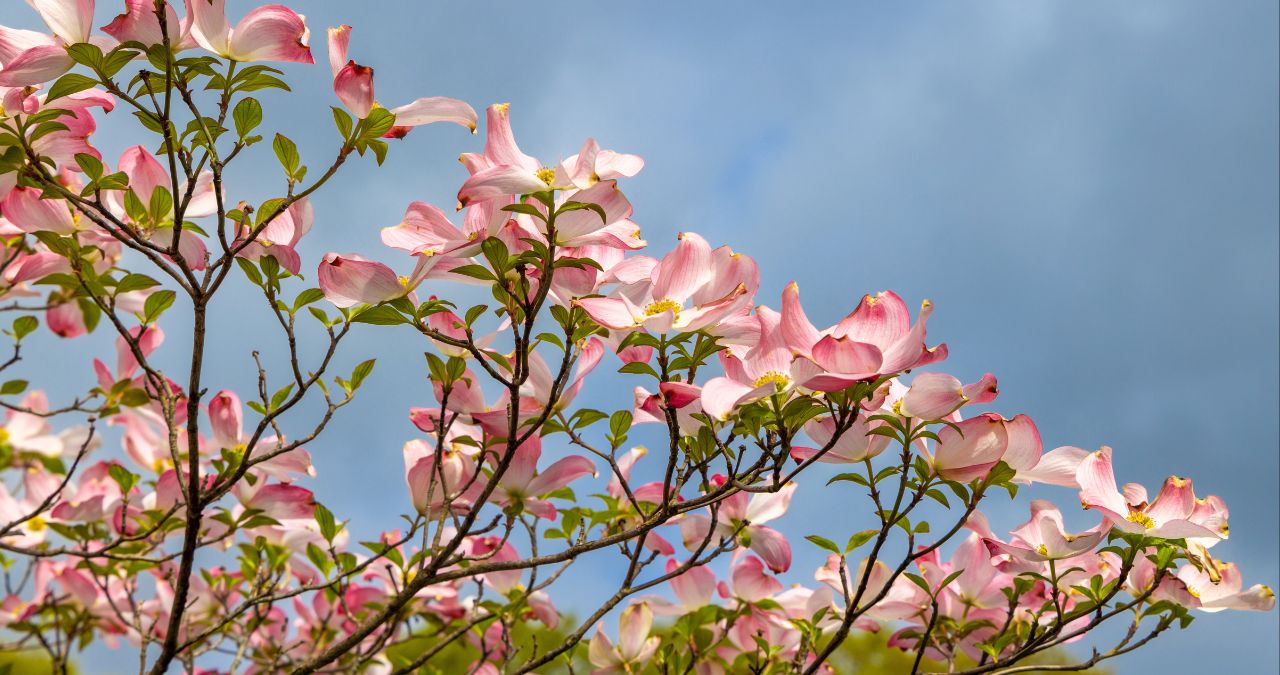Is Dogwood A Tree Or Shrub?
- 28
- Sep
Dogwood (Cornus) is a genus of flowering plants that includes both trees and shrubs. The Dogwood family boasts a diverse range, with over 50 different types. In the United States alone, you can find 17 native varieties, encompassing both trees and shrubs or subshrubs. Subshrubs, also known as wood, are fast-growing plants that recede to ground level during winter and reemerge from buds at the plant’s base in the spring.
Is Dogwood A Tree Or Shrub?
Throughout the year, people acknowledge the striking appearances of all dogwoods. They dazzle with vibrant blooms in the spring and transition into stunning foliage in the fall.
Remarkably, certain types of dogwood even keep landscapes captivating during winter with their brilliantly colored stems. These plants are beautiful, require minimal maintenance, and are easy to care for. With all these factors combined, it’s no wonder why dogwood is such a popular feature in landscapes across the country.
If you’re interested in adding dogwood shrubs or trees to your landscape, keep reading to learn more about your options.
Flowering Dogwood
One well-known member of this genus is the (Cornus florida), a deciduous tree native to eastern North America. Often recognized for its stunning petal-like bracts surrounding true flowers, this tree blooms in early spring, painting the landscape with its iconic white or pinkish blooms. As an understory tree, it thrives in slightly acidic soils, reaching an average height of about 25 feet tall. However, some cultivars can grow up to 40 feet under optimal conditions.
Despite its allure, it is susceptible to certain ailments, including dogwood anthracnose and powdery mildew. Dogwood anthracnose, caused by the fungus Discula destructiva, is a serious concern, leading to dark leaf spots and affecting overall health. Powdery mildew, on the other hand, manifests as a powdery white growth on the foliage, hampering the tree’s vigor and aesthetic appeal. Another menace is the dogwood borer, an insect that targets weakened or stressed trees, causing damage to the bark and compromising the tree’s structural integrity.
The flowering dogwood is native to Eastern North America and is hardy in USDA zones 5 through 9. They average 15 to 30 feet tall and wide, and they do best in full sun to part shade exposure.
Kousa Dogwood
The kousa (Cornus kousa) is simply breathtaking. Unlike the flowering one, the blooms on the kousa appear after the leaves appear. They are more resistant to diseases than the flowering dogwood, and while it’s native to Asia, it does well in certain parts of the United States, as well.
The kousa thrives in USDA hardiness zones 5 through 8 and can grow 15 to 30 feet tall and wide. It will thrive in full sun to part shade exposure.
Hybrid Flowering Dogwood
The (Cornus x Rutgersenis) is a cross between the flowering and kousa. It’s more resistant to disease than the species it is bred from and the flowers it produces are quite showy, and last longer than both of its parent varieties.
The hybrid flowering dogwood thrives in USDA hardiness zones 5 through 9 and grows between 10 and 20 feet tall and wide. It does best in full sun to part shade exposure.
Pacific Dogwood
The (Cornus nuttallii) offers a dazzling spectacle with its showy white flowers and can reach towering heights of 40 feet. Another notable dogwood species is the cornelian cherry (Cornus mas), a small tree that stands at approximately 25 feet tall and is prized for its early spring blooms and edible fruits.
Both species, along with other members of the dogwood family, contribute to the natural beauty of landscapes, underscoring the significance of this diverse and captivating genus in horticulture.
Common Dogwood
A shrubby plant, the common dogwood is also referred to as the European dogwood. It features bunches of small flowers that sit on stems with a reddish hue. Because of the color of the stems, this type of dogwood makes a statement in the winter months, as well.
Native to Europe and Asia. It thrives in USDA hardiness zones 4 through 7 and grows 8 to 15 feet tall and wide. It will flower best in sun to part shade exposure.
Add Interest to Your Landscape with Beautiful Dogwood Trees and Shrubs
Dogwoods are both trees and shrubs, and with so many different options to choose from – many of which thrive in the United States, and all of which are simply lovely – it’s easy to see why this plant is such a popular feature in landscapes across the country.
What type of dogwood species will thrive best in your hardiness zone? Learn more about your hardiness zones: USDA Plant Hardiness Zone Map
Arbor Hills Tree Farm & Nursery Omaha
We provide the Highest Quality Field Grown Nebraska Trees and Shrubs – directly to our customers, at the lowest possible price.
Whether you are looking for trees for:
- new home landscaping
- wind blockage
- commercial or residential
Simply select the tree(s) you want and they will be ready for pickup or delivery the following Saturday Morning. The trees are easy to handle and plant. Click here for more information.



